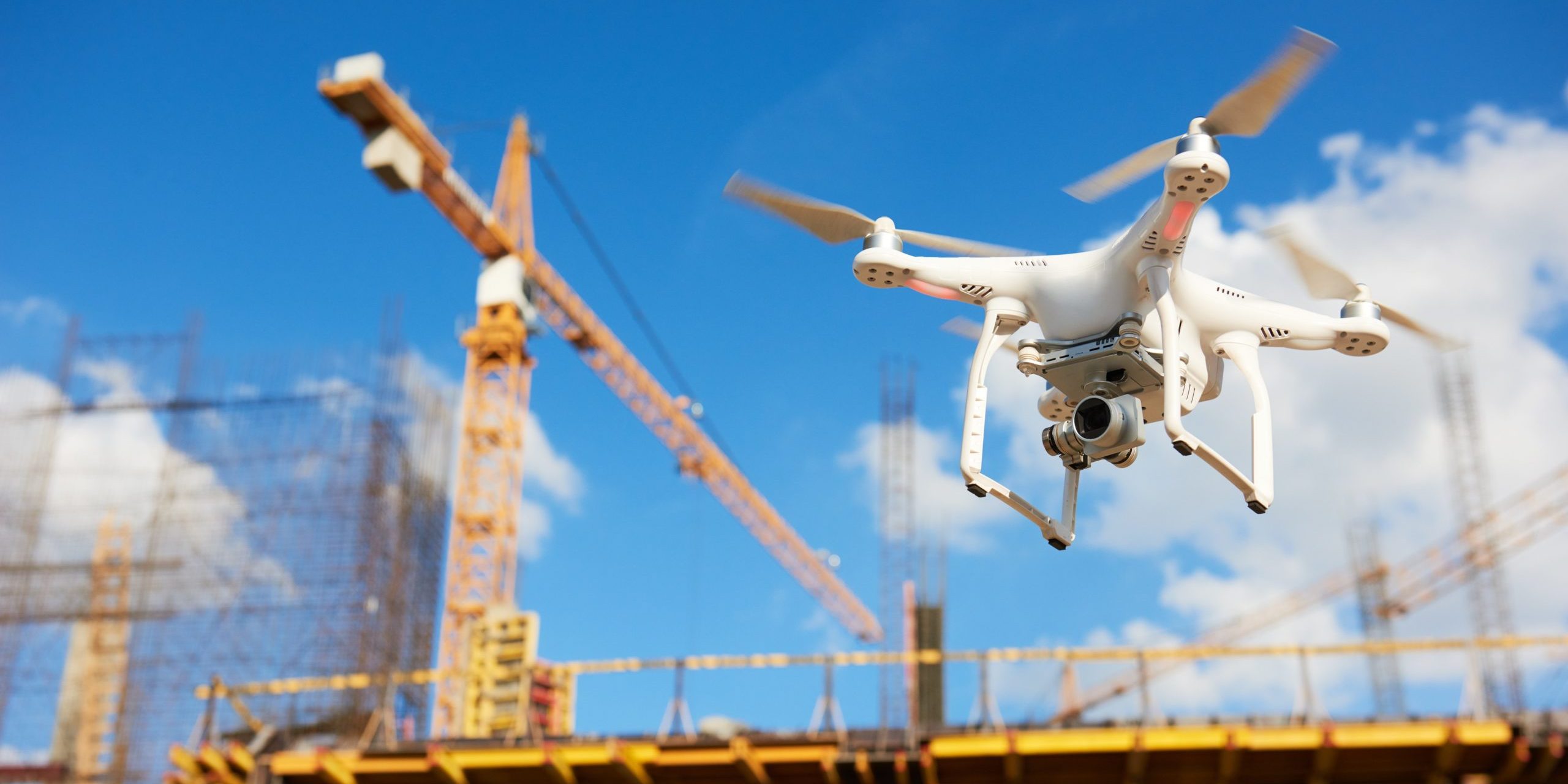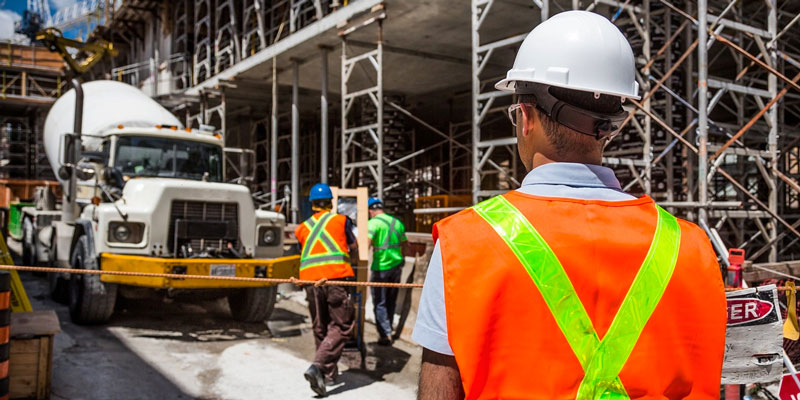The construction industry has experienced both the good and the bad in the past decade. It’s an industry that’s always on the rise, despite dealing with labor shortages and material costs. Yet, the biggest mark of growth for the industry has been the evolution of technology, including solutions that promote efficiency and yield better results.
While implementing new technology can seem daunting, experts believe it’s essential to continue thriving in the industry. There are solutions and tools for nearly every level of use, whether your company wants to go completely digital or ease into the tech world. The bottom line is that technology isn’t going away. It’s important for your company to figure out what solutions work best for you and decide the most beneficial ways to implement them.
“You want to get to the root of what the apprehension is,” explained Kit Dickinson, industry executive, business development at ADP. For many, the apprehension simply lies in fear of change. When someone has been doing something one way for years, it can feel uncomfortable and maybe even pointless to make a change. The fear could also lie in safety. Is the company’s data safe when it’s put into a cloud-based application rather than at the local business? It’s important to determine why someone feels weary about implementing new technology and then work to alleviate that fear. “The irony is that the apprehension is actually, in many ways, causing more risk to your business than adopting a new technology.”
Addressing Labor Shortages with Technology
Implementing new technology can also help alleviate the labor shortages that have been plaguing the construction industry. Younger generations now entering the workforce have grown up using technology their entire lives. Making sure that your company is staying up to date can help attract these younger workers to your field. There’s often a misconception that you have to pursue higher education to learn about different types of technology. However, construction technology such as drones, AI, or 3D imagery can still expand your workers’ skill sets.
Using Technology to Minimize Cyberattacks
In addition to labor shortages and material costs, one of the biggest issues hurting the industry is the increase in ransomware and data breaches. An estimated 50,000 to 60,000 companies are running their business on legacy financial systems or enterprise resource planning (ERPs), or even running them locally on-premise, said Dickinson. That carries a significant risk for cyberattacks versus going with a proven cloud-based offering.
Dickinson shared a story about a construction company that had to go completely dark after a ransomware attack. They couldn’t pay people for up to two weeks nor run their operations. It’s crucial to partner with technology providers who have proven, established security measures as part of their offering to keep your data and operations safe. ADP Workforce Now® for Construction automates construction payroll to help construction firms manage the industry’s nuances.
The Unique Nature of Construction
“Construction is extremely unique in the nature of the business in that the work is performed at job sites that could be in different cities and states. Then when you factor in that you might be receiving government funding to work on those jobs, you have very unique reporting requirements that are specific to the industry … it’s at a higher compliance burden, further reinforcing the need to partner with a Human Capital Management (HCM) provider that has the ability to support that complexity,” said Dickinson.
The Truth Behind Artificial Intelligence
Artificial intelligence, or AI, is a term seen everywhere. But what does this mean for construction? In short, AI is nowhere near dominating the industry. In fact, it’s still not as prevalent as one might think. Yet, using AI can bring more benefits to your company than you might think.
“Where the biggest impact is going to be is data analytics,” said David Pratt, director of corporate and operational technology at Robins & Morton. “You’re going to have predictive maintenance. You’re going to be able to optimize project schedules. You’re going to be able to aid in risk management.” Construction companies, particularly managers, are collecting a vast amount of data. With AI, they can make this data digestible and streamlined, as well as problem solve potential issues.
There’s now takeoff software for preconstruction, where AI is implemented to analyze drawings of buildings or interiors and estimate the types and amounts of materials needed. Pratt said he’s seen team members utilize AI to grab the material hardware for specs. “Let’s say you put that into some kind of generative AI like ChatGPT — you can go ahead and ask it, ‘Quantify all of the parts I need for this based off of this spec and put it into a table format to help me create my parts list, my cost.’ This eliminates the potential hours of research spent trying to find this information. With AI, constructors can have a table completed in minutes. This also applies to Standard Operating Procedures (SOPs). By having AI do the work, workers can spend more time in the field and less time doing manual tasks.”
Pratt stressed that your team should always check the AI’s work. Copy it into a Word document, reread it several times, and modify it if needed. Make sure that it also matches your company’s compliance standards and brand standards. While AI is a great tool and saves a lot of time, it’s still not perfect.
Maximizing Digital Solutions
“It all goes back to data. What do you do with all the data that we currently have? In the past 10 years, that’s been the biggest question.” This has been evident with the introduction of Revit back in the early 2000s, which was bought out by Autodesk, and all the way to 3D models. All of these tools use data analytics to create more efficiency when completing projects.
The Impact of Drones
What’s really changed the industry, however, are drones. Drones are now essential for site surveys and inspections. They can even simply be used to provide a bird’s eye view of your project. Prior to drones, companies had to hire helicopters to fly out and offer a top-down perspective. Now, you can use a drone, along with digital platforms like Procore, Plan Grid, or Autodesk Field, to do data management on an iPad out in the field. You can now have the full 3D project model on your mobile device. Data transfers are quick and practically instantaneous.
The Role of Sensors
Sensors can also be used in multiple ways. You can wear them to determine your health. Or you can use sensors on concrete to alert you when your concrete is secure. Everything is now virtual, Pratt explained. You can use technology to locate pieces of equipment on your job site, connect delivery schedules to your crane operation, or more recently, for automation.
Creating Efficient Models
The industry has also utilized 3D printers for construction models. For example, the printer could make a model of a 10-story building that’s dividable by layer, meaning that each piece could be removed to look inside the facility. In a digital world, 3D printers still provide something tangible and physical. “3D printers make it easy to print models of a facility. We print them, and we can give them to our clients and give them to our job sites. People can have full conversations about the constructability based off a 3D model,” said Pratt. Virtual and augmented reality is also huge in the industry. In the past, construction teams would build physical mockups to establish a visual representation of a space. Now, with virtual reality, this can be done digitally, promoting sustainability and reducing costs.
Conclusion
Implementing technology requires initial upfront costs, as well as a learning curve, but the payoff is insurmountable. Your team can save hours of time by taking advantage of digital solutions; you can minimize the risk of cyberattacks; and you can continue attracting a younger workforce to your company.
To begin your technology journey or to obtain information about the Associated Builders and Contractors Tech Alliance or the Alabama Chapter’s yearly Technology Summit, visit www.abc-alabama.org.













